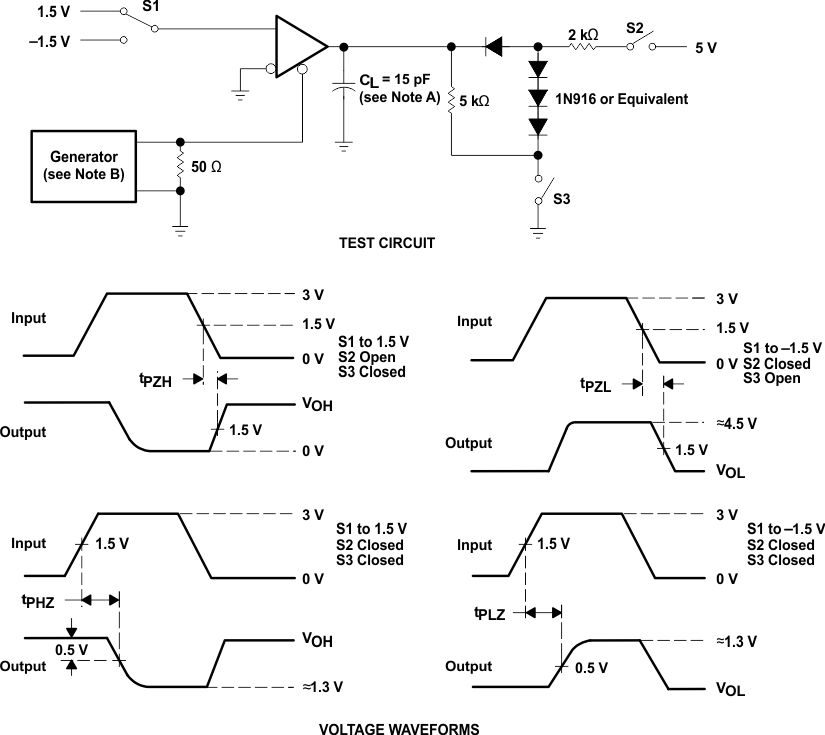SLLS101I July 1985 – August 2025 SN65176B , SN75176B
PRODUCTION DATA
- 1
- 1 Features
- 2 Applications
- 3 Description
- 4 Pin Configuration and Functions
- 5 Specifications
- Parameter Measurement Information
- 6 Detailed Description
- 7 Application and Implementation
- 8 Device and Documentation Support
- 9 Revision History
- 10Mechanical, Packaging, and Orderable Information
Package Options
Refer to the PDF data sheet for device specific package drawings
Mechanical Data (Package|Pins)
- D|8
- P|8
- PS|8
- |
Thermal pad, mechanical data (Package|Pins)
Orderable Information
Parameter Measurement Information
 Figure 6-1 Driver VOD and VOC
Figure 6-1 Driver VOD and VOC Figure 6-2 Receiver VOH and VOL
Figure 6-2 Receiver VOH and VOL
A. CL includes probe and
jig capacitance.
B. The input pulse is supplied by a
generator having the following characteristics: PRR ≤1MHz, 50% duty cycle,
tr ≤ 6ns, tf ≤ 6ns, ZO = 50Ω.
Figure 6-3 Driver
Test Circuit and Voltage Waveforms
A. CL includes probe and
jig capacitance.
B. The input pulse is supplied by a
generator having the following characteristics: PRR ≤1MHz, 50% duty cycle,
tr ≤ 6ns, tf ≤ 6ns, ZO = 50Ω.
Figure 6-4 Driver
Test Circuit and Voltage Waveforms
A. CL includes probe and
jig capacitance.
B. The input pulse is supplied by a
generator having the following characteristics: PRR ≤1MHz, 50% duty cycle,
tr ≤ 6ns, tf ≤ 6ns, ZO = 50Ω.
Figure 6-5 Driver
Test Circuit and Voltage Waveforms
A. CL includes probe and
jig capacitance.
B. The input pulse is supplied by a
generator having the following characteristics: PRR ≤1MHz, 50% duty cycle,
tr ≤ 6ns, tf ≤ 6ns, ZO = 50Ω.
Figure 6-6 Receiver
Test Circuit and Voltage Waveforms
A. CL includes probe and
jig capacitance.
B. The input pulse is supplied by a
generator having the following characteristics: PRR ≤1MHz, 50% duty cycle,
tr ≤ 6ns, tf ≤ 6ns, ZO = 50Ω.
Figure 6-7 Receiver
Test Circuit and Voltage Waveforms